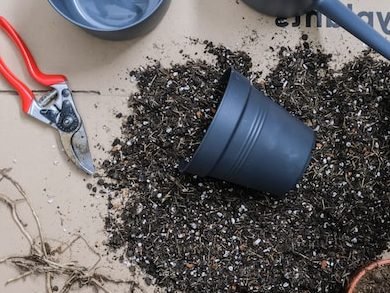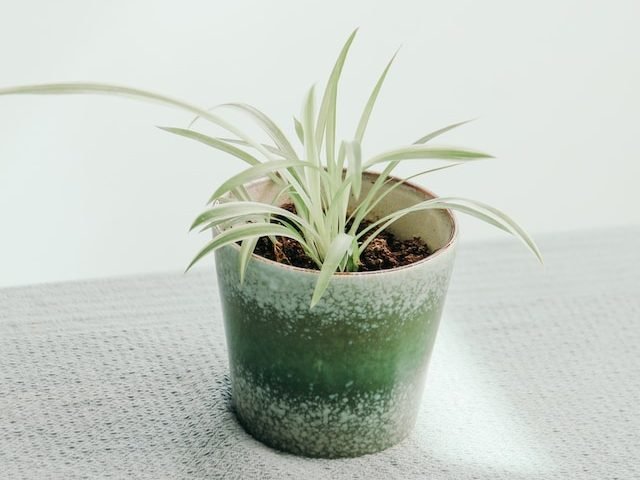
What is Root Rot?
Root rot is one of the worst conditions your houseplants can develop. It generally occurs when the roots of your plant have too much moisture, normally caused by; overwatering, poor drainage or badly draining soils. In mild cases, root rot can be fixed by letting the soil properly dry out and taking up better watering habits. When the infection gets worse the best way to fix root rot would be to repot your plant, trimming away any infected roots and dying leaves in the process. This isn’t a guaranteed way to save the plant, but it can’t hurt to try!
How to diagnose root rot
Spotting root rot can be a little tricky as most of the initial symptoms can also be related to other issues with your plants care, such as; yellowing leaves, slow growth or moist soil.
A dead give away for root rot is mushy stems or wilting leaves starting from the base of the plant. Seen as though the roots are first to go the problems will always work their way up, so if you catch it when it’s lower down you have a far better chance of saving the plant. If you spot any of these issues, it might be worth taking a look at the roots by popping your plant out of the pot for a second and looking for brown or mushy roots.
If left too late the entire plant could simply topple over. With no roots left to support it and hold it into the soil and the stem becoming mushy at the base the plant will just fall. At this stage, there’s really no solution. You could, however, try to take cuttings from healthy areas of the plant to propagate.
How to fix Root Rot
Root rot can be a tricky condition to deal with in houseplants. If you catch it early then it can be quite simple to resolve, but if left too late then it’s often a death sentence for your plant.
Let the soil dry out (for mild cases)
Great, you’ve spotted the signs early and have caught the root rot before it has properly taken hold. The next step is simply to let the soil dry out a little bit. Pause on watering your plant for a few days and make sure you can tick off all of the list items below:
- Remove anything from the surface of the soil (dropped leaves, wood chips etc…)
- Check the pots drainage holes are not blocked
- Make sure that the saucer or tray is emptied regularly
Repot the plant and trim the roots (for bad cases)
If you’ve missed most of the signs and your plant is now in the midst of a fight with root rot then it’s time to make a big move. You’ll want to repot your plant and trim off all of the unhealthy roots and leaves.
The best way to go about this is to remove the plant from the pot completely, then pick away the majority of the soil with a chopstick. From there you’ll want to wash the roots of any more soil under the tap, this will make it very easy to see the healthy white roots from the infected brown, mushy roots.
Then trim all of the infected roots with some sterilised scissors or shears, you can just use a little hand sanitiser on the blades. Making sure to clean and re-sanitise them afterwards. Once you’ve finished on the roots, roughly estimate the percentage of remaining roots compared to when you started and remove the same amount of leaves. It’s important at this stage to also trim off any buds or flowers.
Trimming off all of these leaves might seem like a strange move, but it’s done so that the smaller amount of roots can still maintain the health of the plant.
From there repot the plant in some well draining soil and take up good watering practices. With any luck the root rot won’t return.
What causes root rot?
Root rot is a condition caused due to pathogens that live in high moisture environments. Generally, it takes hold because of overwatering and poor drainage in the pot/soil. As the leading causes of root rot are so straightforward, with proper maintenance it can be easily prevented.
Overwatering
The key factor in most cases of root rot is overwatering, this results in soils with a very high moisture level which is exactly what it needs to quickly begin developing.
Non-draining soils
Generic potting mix is normally okay for most of your houseplants, but you should consider how well the soils you’re using can drain off excess water. If you’ve not got the best watering habits then your soil could be holding onto far more liquid than it should be.
Non-draining pots
Most plant pots will have drainage holes in the bottom of them, this lets out any extra liquid and stops the soil from getting waterlogged quickly. Though it’s not uncommon to find that the pots you bought your plants in haven’t had the holes punched out correctly, they’re blocked up or they simply don’t have them at all. Make sure to check all your pots and create holes at the bottom if needed.
Impermeable pot materials
Although clay or terracotta pots can be a little bit more expensive or breakable, their upsides are much more than just the better look. The clay they’re made of is permeable which means that some of the water in your soil can evaporate through the sides of the pot. This isn’t the case for the plastic pots that most use, which instead hold in all of that moisture.
Complete Houseplant Care eBook
Our comprehensive (and rather good looking) eBook that will teach you everything you need to know to successfully care for, and maintain your houseplants!
Buy onHow to prevent root rot
As root rot can be so destructive to your houseplants, it’s best to put good measures in place to stop the condition forming in the first place. In this case, it’s far better to be prepared than reactive when you start seeing signs of sickness in your plants.
The best way to prevent root rot is by maintaining good watering habits for your plants, letting them dry properly, and allowing a good amount of drainage in your soil and pots.
Maintain good watering habits
As always with houseplants, root rot prevention mostly comes down to a good knowledge of when to water your plants and when to leave them alone. The normal test that we use is simply pressing your finger into the soil to the first knuckle, if the soil is a little dry then give it a little water, if it’s moist then leave it be.
It’s a good idea to get to know the weight of your plants both before and after watering. This allows you to understand if you need to give them some more water simply by giving them a little lift.
Increasing soil drainage
You can very easily increase the amount of drainage in your houseplants’ soil by mixing perlite with your soil, this will make it far easier for water to flow through the soil and out of the drainage holes of your pots. Another easy step is to add a few small stones or pebbles to the bottom of your pots, this helps in making sure that the drainage holes are never blocked by soil or debris from your soil.
Check your pots
An easy way to prevent root rot is to make that the pots you’re using have good drainage holes in them, and the trays or saucers beneath them are regularly emptied. This ensures that your plant is never sat in water for too long, resulting in a far lower chance for over-saturation.















